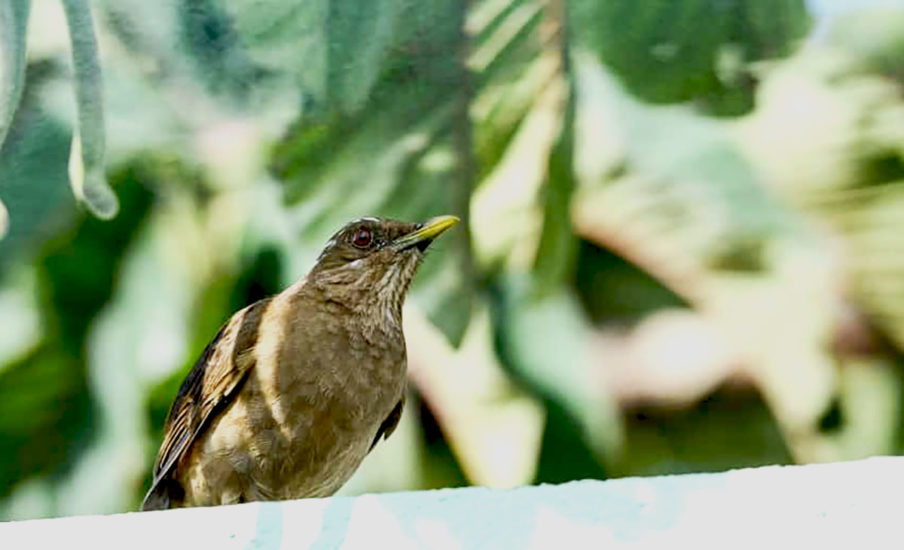
Costa Rica’s national bird, the Yigüirro, or clay-colored thrush (Turdus grayi), holds a special place in the nation’s culture. This bird, with its understated appearance and distinct song, represents the country’s connection to nature and agriculture.
Found across Costa Rica, from city gardens to rural lowlands, the Yigüirro is a familiar presence for locals and visitors. This post examines the Yigüirro’s journey to becoming a national symbol, its physical traits, its iconic song, and its role in Costa Rican traditions and ecology.
The Yigüirro’s Path to National Symbol
On January 3, 1977, President Daniel Oduber Quirós declared the clay-colored thrush Costa Rica’s national bird. The choice reflected the bird’s widespread presence and its song, which signals the rainy season’s start, a vital period for farmers.
Unlike rarer birds limited to specific regions, the Yigüirro thrives in nearly every part of the country, making it a relatable emblem of Costa Rican life. Its selection highlights the nation’s preference for familiarity and practicality over flashier alternatives.
Where the Yigüirro Lives
The Yigüirro adapts to diverse environments, appearing in urban areas, forests, and farmlands below 7,800 feet. Its range extends from South Texas to northern Colombia, but Costa Rica claims it as a cultural icon. For those eager to spot one, here are the Yigüirro’s key features:
- Size and Shape: Measures 9–10.6 inches, with a plump body and short tail, resembling an American robin.
- Plumage: Yellow-brown or olive-brown upper parts, cream or buff underparts, and a faintly streaked throat.
- Distinctive Traits: Greenish-yellow bill with a dark base, pinkish legs, and reddish irises.
- Movement: Hops on the ground, often flicking its tail after landing.
The Yigüirro forages for fruits and insects in trees or on the ground, making it a common sight in parks or backyards. Birdwatchers visiting Costa Rica’s varied landscapes will find it in most regions.
The Song That Signals Rain
The Yigüirro’s song, sung by males from April to June, is a low-pitched series of slurred whistles. This call aligns with the rainy season, a time when crops like coffee and rice grow. Farmers have long relied on the song as a sign to prepare for planting.
Locals often compare the sound to a cat’s meow, though its unique tone sets it apart. Those visiting between March and May, especially at dawn around 4:30 a.m., will hear this distinctive sound across Costa Rica.
The Yigüirro in Costa Rican Culture
The Yigüirro’s constant presence near homes and fields has cemented its place in Costa Rican traditions. Poets like Juan Varela and songwriters like Marcos Ramírez reference its song as a symbol of simplicity and nature’s rhythm. It appears in folklore, novels, and even souvenirs, reflecting its status as a national emblem.
The National Day of the Yigüirro, observed on December 16, celebrates this bond, uniting Costa Ricans in appreciation of their shared heritage. The bird’s role underscores the country’s values of humility and connection to the land.
The Yigüirro’s Ecological Contributions
The clay-colored thrush supports Costa Rica’s ecosystems by eating fruits, berries, and insects, aiding seed dispersal and pest control. During the rainy season, when food abounds, it builds nests and raises chicks, syncing its life cycle with nature’s patterns.
The species faces no major threats, with a population estimated at 20 million across its range, classified as “least concern” by the IUCN. Costa Rica’s national parks and conservation efforts ensure the Yigüirro remains a thriving part of the country’s biodiversity.
The Yigüirro’s Role in Costa Rican Life
The Yigüirro remains a steady presence in Costa Rica, linking the nation’s past and present through its song and habits. For locals, spotting the bird in a backyard or hearing its whistle at dawn connects them to childhood memories and agricultural traditions. Farmers still associate its April-to-June song with the rainy season, a period critical for crops like coffee, bananas, and rice. Visitors encounter the Yigüirro in everyday settings—perched on a fence in San José or foraging in a park near Manuel Antonio—making it an accessible part of Costa Rica’s wildlife.
Its widespread distribution reflects the country’s efforts to preserve natural habitats, as protected areas like Corcovado and Monteverde provide safe spaces for the bird to thrive. For birdwatchers and travelers, the Yigüirro offers a chance to engage with Costa Rica’s culture, whether through spotting its hop or recognizing its call during a morning hike.
The bird’s simplicity, paired with its deep ties to the land, makes it a fitting symbol of the nation’s identity. Share your Yigüirro sightings in the comments or check out our birdwatching guides to plan your next adventure.

